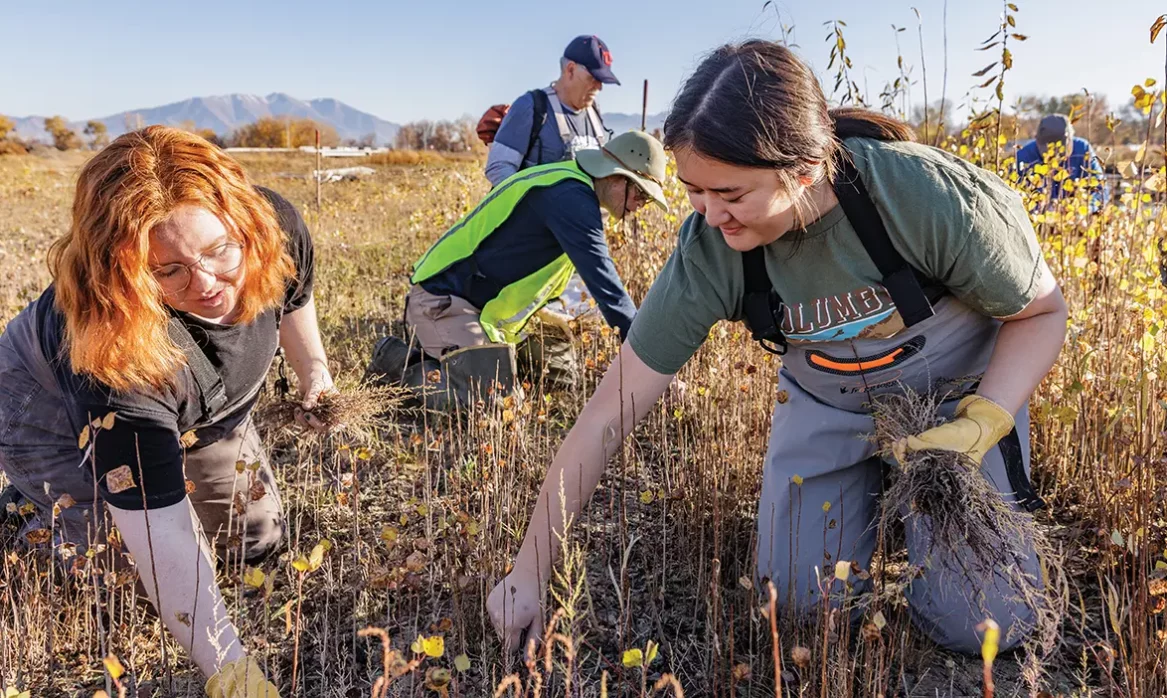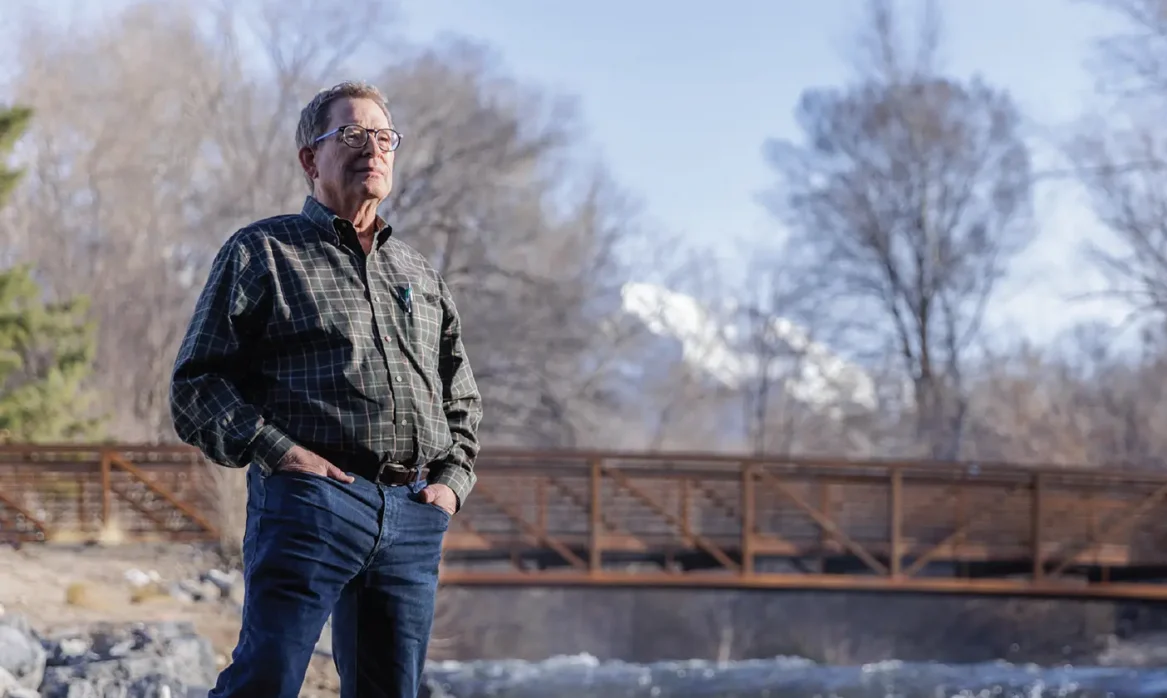Years of research and advocacy cumulated in a breakthrough in water conservation as the State Weed Committee of Utah’s Department of Agriculture and Food legalized hybrid Bermudagrass in Utah—thanks to a successful petition by plant and wildlife sciences professors Bryan G. Hopkins (BS ’90, MS ’91) and Neil C. Hansen (BS ’92, MS ’94) and their students and other colleagues. Hybrid Bermudagrass is related to common Bermudagrass, which continues to be banned in most of Utah as a noxious weed.
In a study published by the International Turfgrass Society, Hopkins and Hansen found that hybrid Bermudagrass, a cross between common Bermudagrass and African Bermudagrass, is not only surprisingly cold hardy but also requires significantly less water than most other species. While it will take time for hybrid Bermudagrass to become widely available from Utah sod farms, Hopkins wants people to “know that it’s now an option.”
Hopkins says hybrid Bermudagrass holds the potential for a great improvement in water conservation. “We have a sacred stewardship to care for the earth. . . . The massive water savings could help save the Great Salt Lake and help the scarcity of water in the West.”

60%
The minimum potential reduction in lawn water usage by switching to hybrid Bermudagrass.
Deeply Rooted
The roots of hybrid Bermudagrass (right) plunge deeper into the soil than those of Kentucky bluegrass (left) and other commonly grown grasses, allowing them to absorb water even when the surface is dry.
3–6 weeks
How long hybrid Bermudagrass survived without watering in the study. Kentucky bluegrass, the variety most used in Utah lawns, showed signs of stress after only a week.












